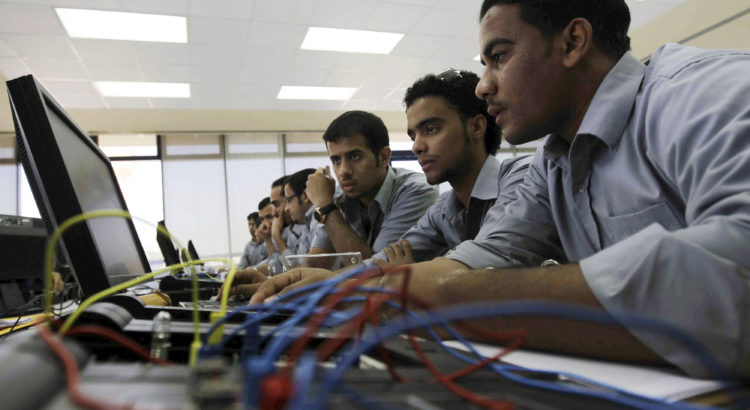Por: thehindubusinessline.com/Rohan Sandhu /11-04-2018
Demonstrated impact, cost-effectiveness, and the ability to work with the existing system are crucial
Former US President Bill Clinton’s observation while reviewing school reform initiatives in the US may hold true for India as well: “Nearly every problem has been solved by someone, somewhere. The frustration is that we can’t seem to replicate (those solutions) anywhere else.”
Over the past year, however, India’s Ministry of Human Resource Development (HRD) has made significant efforts to identify NGO-led innovations around the country and create platforms for them to present to and engage with state education departments.
HRD Secretary, Anil Swarup, calling himself a “principal facilitator,” travelled across States to identify innovative models and organised five workshops to showcase such education innovations. “A government champion,” the Brookings Institution’s Millions Learning report finds, is often the “linchpin behind experimentation and greater participation in policy-making.”
Complex undertaking
But, while a government leader’s backing is crucial, scaling is a complex undertaking that comes with some fundamental questions, and the need to recognise that not all innovations are necessarily scalable. Experiences of a number of educational innovations point to factors that are critical for an innovation to be one that is scalable — demonstrated impact, cost-effectiveness, and the ability to work with the existing system.
At the outset though, the definition of “scaling” itself must be clarified. Key here is the question of what should be scaled — an intervention as a whole or some critical components. The Millions Learning report, studying a multitude of case studies, concludes that the process of scale requires that a balance be struck between the non-negotiable elements that are imperative to the success of a programme and must be replicated, and other elements that can be adapted as per specific requirements of individual contexts.
This portends the need for rigorous impact metrics or proof of concept, and the ability to disaggregate the outcomes generated by an intervention’s myriad elements. But, as Mary Burns writes, “educational projects do not undergo the kind of meaningful or rigorous impact evaluations that determine whether they are indeed worthy of being scaled.”
A survey of about 40 technology-based education innovations in India corroborates this. While most innovations report their reach, information on their outcomes is seldom available. This, though, is linked to a larger systemic challenge — the absence of a universal assessments or monitoring framework, because of which there is no common benchmark against which outcomes across different models may be evaluated and compared. It is critical that this gap is addressed before innovations are scaled based on personal relations and adhoc decisions instead of well-defined impact metrics.
Apart from delivering impact, for a country like India, models that seek to scale must also do so in a cost-effective manner. As Venkatesh Malur, who led Sampark Foundation’s Pedagogy Framework — reaching over 2.8 million children studying in 46,000 primary schools in India — summarised inAccelerating Access to Quality Education that Subir Gokarn and I co-edited a few years ago, “There is a need to prioritise frugal innovations in classroom transactions and work in sync with the existing system that will leverage the existing teachers, systems, and infrastructure.”
In line with Malur’s point on frugality, Sampark’s Smart Class Kit costs one dollar per child per year. Other innovations which have attempted to scale reinforce this. Gyan Shala, which scaled its operations in Ahmedabad, Gujarat, to cover schools in West Bengal, Bihar, and Uttar Pradesh, operates with a total cost of education per student amounting to ₹3,000 per year. The Bharti Foundation’s schools similarly seek to deliver education at a rate that is lower than the government school system, so that they may be easily replicated by the latter.
In a similar vein, models that are able to scale must be able to operate within the constraints of the existing system, with the current set of teachers, school leadership, and government machinery. Often, social enterprises and NGOs, in an attempt to see some quick successes, actively avoid engaging with governments and teachers.
But if they wish to scale, such an attitude can prove deleterious. In several cases, pilots succeed in specific contexts with favourable conditions, but fail without these. In Kenya, for instance, limited understanding of public sector and political economy constraints prevented a contract teacher programme that was able to raise students’ test scores when implemented by an NGO, to show the same positive outcomes when implemented at scale by the government.
Studies attribute this difference to the “lack of attention to the interaction between the intervention being tested and the broader institutional context.” Ark, which designed a School Quality Assessment framework for 120,000 schools in Madhya Pradesh, sought to create a product that had government ownership from the very beginning and was “delivered with existing public sector capacity, rather than being dependent on a major skills upgrade” (Accelerating Access to Quality Education).As an innovation scales, partnering with the government system to build its capacity becomes even more critical since scaling is not just a straightforward process of replication, but a more complicated one of adaptation. Binswanger and Aiyar (2003) recommend real-time process-monitoring that provides “continuous feedback that enables the scaling-up process to constantly be improved.”
Given the state’s institutional capacity constraints, Malur writes how Sampark works “hand-in-hand with the state machinery,” providing support and strengthening it. Teachers, too, are provided constant support through continuous trainings, frequent visits from Sampark’s coordinators, and a helpline that is available at all times. On a related note, innovators must be flexible and open to deviating from their initial model. Ark’s SQA design underwent at least four changes over just one year based on constant testing. “The team rapidly discovered that their original ‘premium’ design was too complex for operating in the contexts, and with the resources, available.”
Ultimately, the success of scaling hinges upon a productive partnership between the innovation and the government and teacher system. This is a partnership that must be established at the very outset — embedded in the core design of the model — and one that needs to be deepened as the innovation is scaled up.
Remedial measures
Finally, the quest to scale should not cause us to ignore some fundamental issues. Several innovations — like remedial programmes — have actually cropped up in response to the challenges imposed by flawed policies. Scaling educational innovations is a worthy endeavour, but it is crucial that we don’t replicate band-aid solutions, while ignoring deeper malaises.
Additionally, it isn’t enough to think of innovation as being the domain of just NGOs and social enterprises. The narrative about the top-down centralised nature of the Indian education system that gives little agency to teachers, school leaders, and frontline administrators, is well-established. While there is undoubtedly a rich supply of innovations outside this system, the demand to adapt and scale these will only be amplified and made more organic if last-mile functionaries and implementers are given the time and space to deviate from the rigidities of the current governance framework.
The writer is an Associate Director at the International Innovation Corps, University of Chicago. This article is by special arrangement with the Center for the Advanced Study of India, University of Pennsylvania
*Fuente: https://www.thehindubusinessline.com/opinion/columns/making-educational-innovations-scalable/article23495239.ece










 Users Today : 48
Users Today : 48 Total Users : 35460179
Total Users : 35460179 Views Today : 65
Views Today : 65 Total views : 3418848
Total views : 3418848